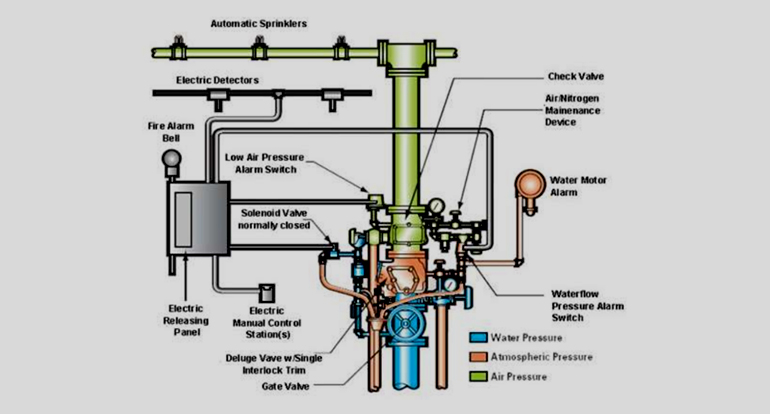These systems are used to provide cooling and/or control the burning in many large scale industrial applications, such as in thermal power plants, Transformers & other oil based equipment’s.
As their name suggests, Medium velocity water spray nozzles are designed to spray water at a medium velocity (i.e. the strength of the spray is weaker than HVWS systems). MVWS systems are best suited for protecting hazards involving light oils – where emulsification from high-velocity water sprayers (HVWS) is not possible. A High Velocity Water Spray (HVWS) system is a water-based fire protection system that sprays water a high velocity – i.e. at a higher strength than a MVWS system.
You would be forgiven for thinking that a HVWS system is strictly better than a MVWS system since the water pressure is higher. But, this isn’t always the case.
HVWS systems are often used to protect equipment that incorporates heavy or medium oils. Equipment such as oil type circuit breakers and transformers, diesel engines and fuel oil storage tanks, turboalternator lube oil systems, and oil-fired boilers.
The high-velocity discharge water jet forms a cone of coarse spray of uniform density. This coarse spray is able to penetrate the flame zone and reach the surface of the burning oil. The turbulence created by the high velocity spray forms an oil- in-water emulsion on the surface of the oil that will not burn. This “emulsification” is the main way the fire is extinguished – along with the cooling and smothering effect.
“So now the we understand what HVWS systems do, let’s summarise the main differences between MVWS vs HVWS systems:”
Medium-velocity water spray systems are designed to control fires involving lighter oils, liquefied petroleum gases, and other flammable liquids with flash points typically below 650 C.
High-velocity water spray systems are installed to extinguish fires involving heavy or medium oils, and other flammable liquids with flash points typically above 650 C (1500 F).


